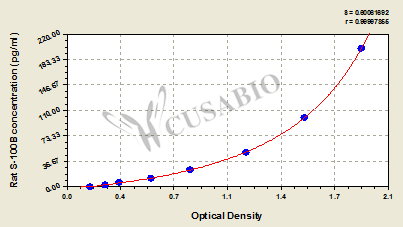The Rat Soluble protein-100B (S-100B) ELISA Kit is a highly sensitive and specific tool for the quantitative measurement of Protein S100-B levels in serum, plasma, and tissue homogenates of Rattus norvegicus (Rat) samples.
Protein S100-B, also known as S100 calcium-binding protein B, is a member of the S100 family of calcium-binding proteins that play a crucial role in signal transduction pathways in the brain and other tissues. Our ELISA kit is specifically designed to measure S100-B protein levels, making it an essential tool for researchers studying signal transduction in the context of neuroscience and disease.
With a detection range of 3.12 pg/mL to 200 pg/mL and a sensitivity of 0.78 pg/mL, our S-100B ELISA kit offers exceptional accuracy and precision in measuring protein levels. The assay time is only 1-5 hours, and the sample volume required is just 50-100ul. The detection wavelength is 450 nm, and the assay principle is quantitative, utilizing a sandwich method for precise measurements.
Our S-100B ELISA kit has been cited in more than 21 research articles, attesting to its high quality and reliability. Whether you are studying the molecular mechanisms of neurological disorders or investigating the role of S100-B in signal transduction, our kit can help you achieve your research goals.






